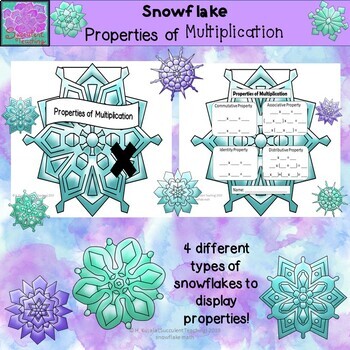Properties of Multiplication Snowflakes
- PDF
- Easel Activity
Description
Multiplication snowflakes are here for winter! Use math snowflakes to display the properties of multiplication! Properties include commutative property, identity property, associative property, and distributive property. These can be used for winter activities, bulletin board ideas, and fun activities for holiday celebrations! There are 4 different symmetrical snowflakes included in color and in black and white. Properties of Multiplication snowflakes can be printed as a pdf file or used as a digital activity.
Thank you for downloading!
Earn Credit for TpT Purchases
Just go to your My Purchases section and click on the Provide Feedback flashing text. Your feedback is very much appreciated. Thank you!
https://www.teacherspayteachers.com/Store/Succulent-Teaching-Llc
Follow Succulent Teaching LLC on Instagram






